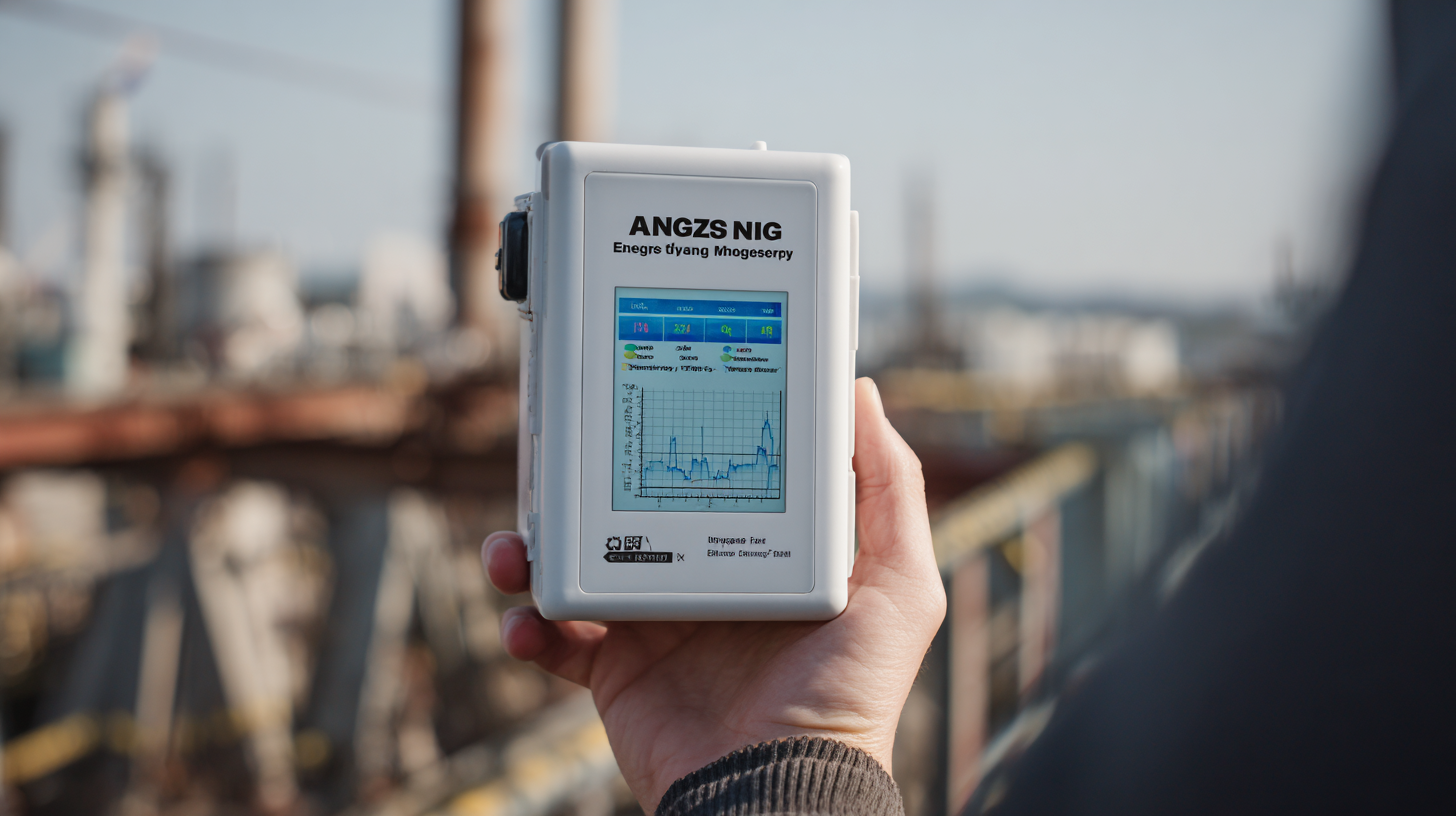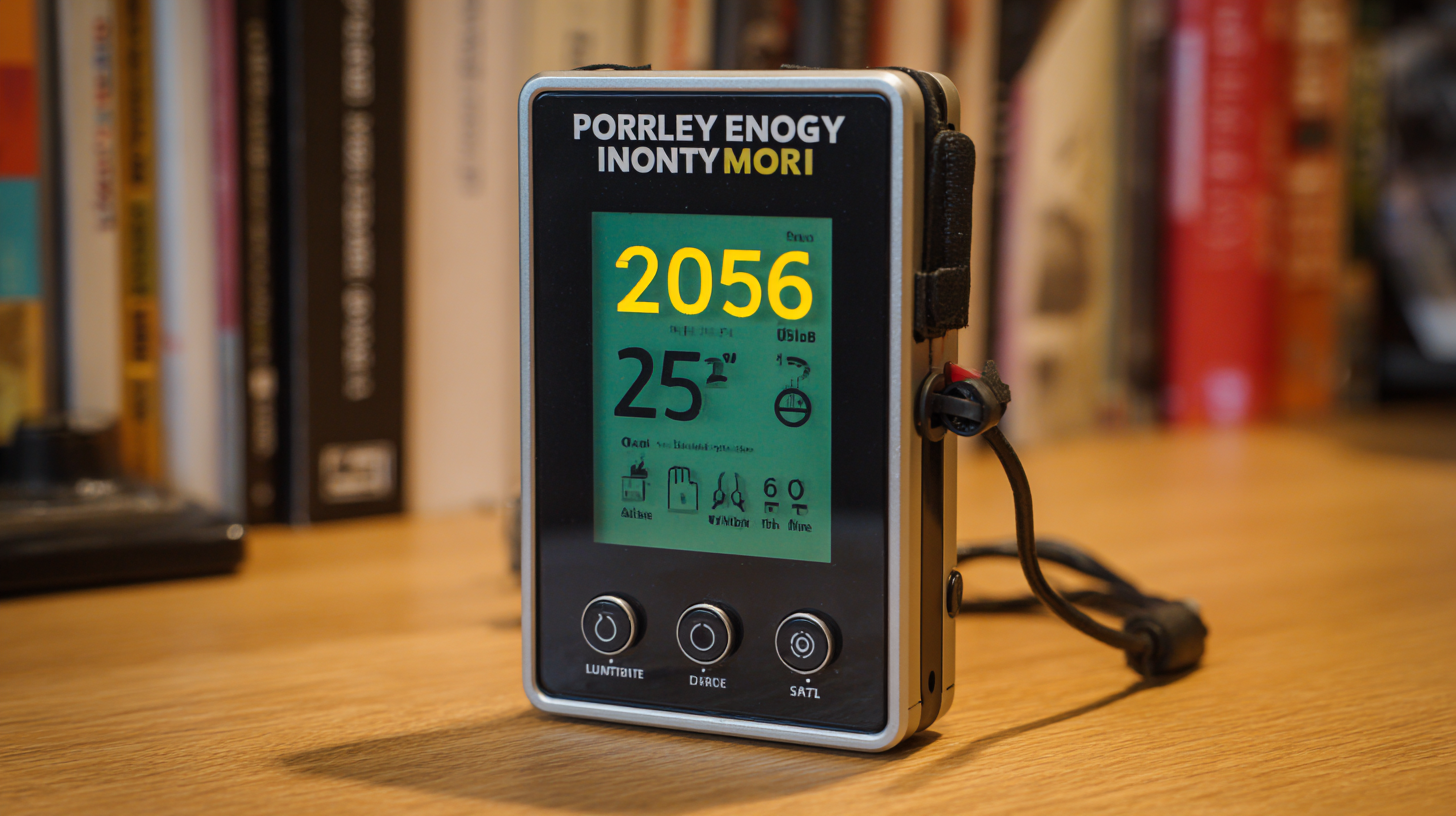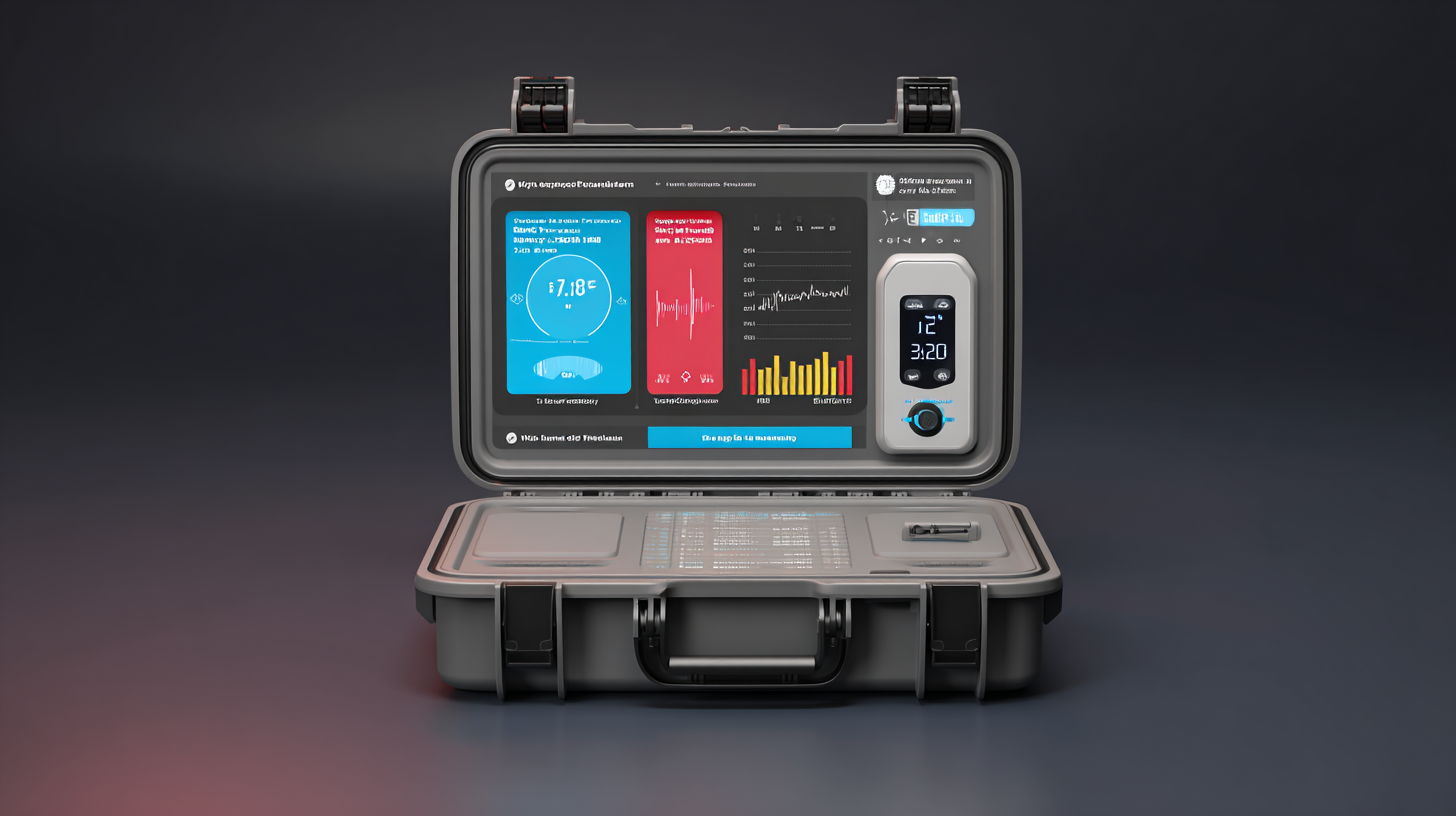Leave Your Message
In an era where sustainability and energy efficiency are paramount, the significance of a Portable Energy Monitor has never been more pronounced. As we approach 2025, understanding the benefits of utilizing these innovative devices is essential for both households and businesses alike. Portable Energy Monitors empower users to track their energy consumption in real-time, enabling informed decisions that can lead to significant cost savings and reduced carbon footprints.

In this blog, we will delve into the myriad advantages offered by these monitors, explore various types available on the market, and provide insights on how to choose the best Portable Energy Monitor to suit your specific needs. Whether you're aiming to optimize your energy use, understand peak consumption times, or simply gain a clearer picture of your electricity usage, this guide will equip you with the necessary knowledge to make an informed selection.
As we look toward 2025, portable energy monitoring is undergoing significant transformations shaped by technological advancements and changing consumer needs. One key trend is the increasing integration of IoT (Internet of Things) technologies. According to a report by MarketsandMarkets, the global IoT in energy market is projected to grow from $20 billion in 2020 to over $60 billion by 2025. This surge signifies that more portable energy monitoring devices will leverage connectivity to provide real-time data, allowing consumers to track energy consumption and efficiency like never before.
Additionally, sustainability is driving innovations in portable energy monitoring solutions. A report from Grand View Research estimates that the global energy management systems market will reach $75 billion by 2027, influenced by the rising demand for devices that promote energy efficiency. Consumers are actively seeking portable devices that not only monitor energy usage but also provide insights on reducing carbon footprints. This trend emphasizes the importance of choosing a monitoring system equipped with features such as energy consumption analytics and sustainable usage recommendations, ensuring users can make informed decisions that benefit both their budgets and the environment.

When exploring portable energy monitoring solutions, understanding import and export certifications in the energy sector is crucial. These certifications serve as a regulatory framework that ensures compliance with safety and quality standards across international borders. Key certifications, such as CE (Conformité Européene) and UL (Underwriters Laboratories), indicate that a product meets necessary safety requirements, providing peace of mind to consumers and businesses alike. Familiarizing yourself with these certifications can help in selecting reliable energy monitoring tools that adhere to industry norms.
Moreover, navigating the complexities of imports and exports requires a comprehensive grasp of the specific regulations applicable in different regions. For instance, some countries may have stringent requirements for energy products, including performance efficiency and environmental impact assessments. Manufacturers and exporters must be diligent in obtaining the correct documentation to avoid potential legal issues and delays. By investing time in understanding these certifications and regulations, you can make well-informed decisions when choosing portable energy monitoring solutions tailored to your unique needs.
This chart displays key insights on portable energy monitors for 2025. The data includes average battery capacity, charging time, weight, and price.
When selecting a portable energy meter, there are several essential features to consider to ensure it meets your specific needs. First and foremost, accuracy is critical. A reliable meter should provide precise readings of energy consumption, which can help you make informed decisions about your energy usage. Look for devices that are well-reviewed and trusted in the market, as accuracy can vary significantly among products.
Another important feature is the display functionality. A clear and informative display makes it easier to interpret the data at a glance. Some energy meters offer backlit or color screens, which can be particularly useful in low-light conditions. Additionally, consider whether you want a device with wireless connectivity. Smart energy meters can connect to your smartphone or home Wi-Fi network, allowing you to monitor energy consumption remotely and receive real-time notifications.
When evaluating portability, weight and size are crucial. Opt for a lightweight design that you can easily carry or transport without hassle. Battery life also matters; a portable meter should have long-lasting power to avoid frequent charging interruptions. These tips will help you choose a portable energy meter that aligns with your lifestyle and energy monitoring goals.
Assessing your energy monitoring needs effectively is essential for maximizing efficiency and achieving a sustainable energy transition. In today’s context, where energy poverty poses significant challenges, it’s crucial to adopt a justice-focused approach that considers societal impacts. Identifying your energy consumption patterns and understanding how they align with broader societal concerns can help guide the selection of an appropriate portable energy monitoring solution. This ensures that you not only meet personal efficiency goals but also contribute positively to the community.
When evaluating different energy monitoring systems, consider factors such as integration with existing technologies, ease of use, and the potential for data-driven decision-making. Innovations driven by smart building technologies and AI offer enhanced capabilities for tracking and optimizing energy use. Moreover, dynamic data fusion algorithms present in smart agriculture show promising potential for resource maximization. By choosing a monitoring system that incorporates these advancements, you can enhance your energy management strategy, aligning personal practices with the growing emphasis on efficiency and sustainability in both urban and agricultural contexts.
| Feature | Importance Level | Typical Price ($) | Battery Life (hrs) | Connectivity Type |
|---|---|---|---|---|
| Real-time Monitoring | High | 120 | 24 | Wi-Fi |
| Mobile App Compatibility | Medium | 150 | 20 | Bluetooth |
| Data Export Options | Low | 100 | 18 | USB |
| Historical Data Tracking | Medium | 130 | 22 | Wi-Fi/Bluetooth |
| User Reviews and Ratings | High | 140 | 25 | Wi-Fi |
When it comes to portable energy monitoring solutions, the market offers a multitude of options catering to various needs. Leading devices like the Sense Energy Monitor and the Emporia Vue stand out for their user-friendly interfaces and robust feature sets. The Sense monitor excels in real-time energy usage tracking, allowing users to identify power consumption patterns to save on costs. Meanwhile, the Emporia Vue is known for its affordability and flexibility, enabling users to monitor multiple circuits, making it a great choice for those looking to manage energy use across different devices.
 Another noteworthy option is the Eve Energy, which integrates seamlessly with smart home ecosystems, providing comprehensive insights into energy usage while also enabling automation. This is particularly beneficial for tech-savvy users who want to enhance their home’s efficiency. When selecting the best portable energy monitoring solution, consider factors such as compatibility with existing smart devices, ease of installation, data reporting capabilities, and of course, budget. By weighing these variables against your specific energy management needs, you can make a well-informed decision tailored to optimizing your energy consumption.
Another noteworthy option is the Eve Energy, which integrates seamlessly with smart home ecosystems, providing comprehensive insights into energy usage while also enabling automation. This is particularly beneficial for tech-savvy users who want to enhance their home’s efficiency. When selecting the best portable energy monitoring solution, consider factors such as compatibility with existing smart devices, ease of installation, data reporting capabilities, and of course, budget. By weighing these variables against your specific energy management needs, you can make a well-informed decision tailored to optimizing your energy consumption.
